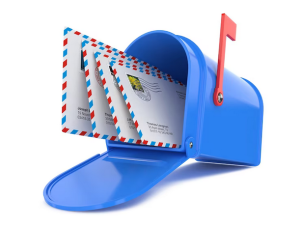In today’s society, banking security is extremely important. You should take precautions and steps to guaranteeing your banking security to be able to protect your financial information as soon as necessary given the rate at which spammers and scammers are on the rise.
Managing finances is simple with digital banking. You may transfer money, deposit checks, and pay bills online thanks to digital banking technologies. The two most common methods of banking are online and mobile, partly because of their convenience.
Here are the steps to banking security
1. Use solid, authentic passcode.

Even if you are unaware of it, your password could provide a gateway for hackers. Creating solid and authentic password is one of the most important steps you take when guaranteeing banking security. Using personal information, such as your name, address, or date of birth, as your online banking passwords, shortening passwords, relying on well-known terms or straightforward numerical combinations, using the same password across several logins, and not routinely changing passwords. These elements may make it simpler for you to remember your passwords, but they also make it simpler for hackers to decipher your password and gain access to your online banking data.
So, the following advice will help you make better passwords for online banking:
Instead of using only one word, choose longer passwords, such a phrase. Make use of both capital and lowercase letters, Include digits and other specialized characters. Avoid using popular sequences like “a,b,c,d” instead you can use special character passwords like “a1$2c%iop@#”. Don’t keep debit or credit cards at the back of your wallet or phone pouch or write passwords on the back of them. Regularly change your passwords for internet banking. In order to reduce the likelihood that your password will be taken or cracked by hackers, change them every three to six months.
To protect your passwords and help creating longer, more complex passwords faster, think about utilizing a password manager.
2. Be discreet with your security codes.
Be cautious to keep your security codes to yourself at all times. Security codes are any and all codes, including those generated by a code calculator provided by your bank, that you must use for electronic payments, internet, and mobile banking.
Your personal security codes are exclusively for you. You are not permitted to distribute them. It’s important you save your codes in a format that only you can recognize, preventing others from deciphering them. Keep the encrypted data separate from your debit card and any other equipment you use to conduct banking transactions. Make sure your security code is difficult to guess if you choose it yourself.
Never choose your birth year, a family member’s name, or your home address’s postcode.
Make sure no one can see you type in your security codes when you are alone. By phone, email, or any other means, never divulge a security code.
3. Enable Two-Factor Authentication
Every transaction in the bank must first be authenticated in order to establish the authenticity of the individual trying to instigate the transaction. Customers using ATMs and POS terminals, those using credit/debit cards at POS terminals, those using online or mobile banking, as well as those visiting the bank in person, are all affected by this. Employees of banks who have access to consumer and bank data are also affected. When clients engage with banking systems like Interactive Voice Response, banks use behavioral biometrics, such as biometric authentication, to confirm the customers’ identities.
When connecting into your online or mobile banking account, two-factor, or multifactor authentication, can add an extra degree of security verification. You must first input your login information and then successfully complete a second security check. For instance, you might be asked to enter a unique number, use fingerprint identification, identify an image, or have an automated phone call call you to confirm your account. Even if a hacker or identity thief knows your online or mobile banking password, this makes it impossible for them to unlock your account.
4. Avoid using public WiFi

When you need to stay connected while transiting, public Wi-Fi is practical, but you can’t rely on it to be secure. A lot of things can take place when you use them. Stuffs like
1. Transmission of data through open networks
2. Harmful hotspots
3. Viruses and spyware
On a public Wi-Fi network, it’s advisable to avoid utilizing online or mobile banking. Here are some guidelines to help you stay safe if you must use a public Wi-Fi network to access online or mobile banking.
1. Disable sharing of public files. Search online for instructions for your operating system.
2. Select only secure websites.
3. Look for “https” in the site’s URL, which causes your browser’s lock icon to appear. Websites that are judged hazardous may be automatically flagged by the firewall on your laptop or mobile device.
4. Use a virtual private network, if possible (VPN). This develops a personal network that is only accessible to you. Using a VPN service, you can set up a VPN on your laptop or mobile device.
5. Subscribe to Banking Notifications

Banking alerts let you know when specific events happen. This is one of the steps to banking security you shouldn’t take for granted. Any action that may be fraudulent or questionable is immediately alerted to you. For the following, email or text alerts are frequently available: High or low balance, brand-new debit and credit transactions, new external accounts that are tied, Login attempts that failed, New passwords Updates to personal information. Change your online and mobile banking passwords right away if you receive an alert and believe there has been fraudulent or suspicious activity.
6. Ensure a proper protection of the devices you use for your online banking.
Installing updates when they become available is usually a good idea. The operating system of the computer should be updated regularly because this closes any security gaps and vulnerabilities in the program. New security patches are included with every upgrade to address operational issues. Information is left exposed to security breaches if the system is not updated.
Maintain the most up-to-date anti-virus software, operating system patches, firewalls, etc. on the device you use for online banking, and make sure your browser is set to the highest level of security. Installing unlicensed software is not advised. Use an access code to secure the device you use to manage your banking affairs. Make sure that only authorized individuals can use the applications that the bank provides for use on the device you use for your banking activities. Always log out after your banking activities are over.
7. Look Out for Phishing links

One of the most popular ways identity thieves get personal and financial information is through phishing. You will typically be tricked into providing your information in this type of scam. Phishing scams can take many various forms, but email or SMS frauds are the most common kind. For instance, you might receive an email claiming to be from your bank informing you that you need to check in and update your information. When you click the link, a fake website seems to be the one you are logging into. Alternately, visiting a link could download tracking spyware to your machine, enabling keystroke logging by identity thieves. In either case, you unknowingly divulged your login information.
This makes it crucial to carefully examine any emails requesting financial or personal information. Check the email address of the sender. Check the email address entered. Zoom in on links. You can see where a link will lead you by hovering your cursor over it inside an email. Don’t disclose private information. Call your local branch or customer care to double-check that an email you receive from your bank is real before providing any information.
8. Select Reliable Financial Apps
Financial apps, such as mobile banking apps, can be used for banking, bill payment, money transfer, and shopping. They’re not all equally safe though. Make sure you’re using the official version of your bank’s mobile app if you intend to utilize it. Downloading the app from the website of your bank is the most effective way to achieve that. If you’re installing the app from the App Store or Google Play, check the developer information and review the app to be sure it’s authentic. This is sure one of the steps to guarantee banking security.
Think twice about the apps you give access to your online and mobile banking information. For managing your finances, you might wish to utilize a budgeting app. Your data is at risk because these apps typically ask for your login details to pull data and build a financial picture. Examine a financial app’s ratings before downloading. Find out about the app’s security procedures and historical data breaches.
9. Respond Immediately to Potential Problems
Always notify your bank if something seems suspect at any time. Whether it is a website fault, an odd email, or a suspect charge, addressing it right away may avoid bigger issues from developing. This action will put a hold on any additional suspicious activity on your account and can provide your bank with the data they require to find the hacker responsible. Please contact the bank directly to report incidents, and follow their instructions.
Contact the bank right away if any of the following situations arise:
- If you no longer have your debit card or are unsure of where it is.
- If you believe someone else may have used or knows your security code.
- If you come across transactions on your bank account that you did not approve.
- If you no longer own the mobile device that has the bank’s payment application installed on it, unless you have transferred the device to another person and deleted the payment application before the transfer.
The bank might disable the banking application on your devices in an effort to stop (further) damage. In that situation, kindly adhere to the bank’s instructions. Please be aware that the bank will never request your security codes from you.
10. Never click links in emails
Examining every email that you receive is crucial, this is one of the steps to banking security. Through the use of the social engineering technique known as phishing, online criminals are skilled at convincing people to give over their personal information. Hackers frequently pose as banks and send emails that look real.
These emails frequently include clickable links that seem to take you to the bank’s website before asking you to check into your account for security reasons. In this scenario, either the link itself contains virus that will infect your computer or it will send you to another page that looks legitimate but instead displays an error message when you enter your login information, indicating that the hacker already has access to your accounts. Even if you think the bank sent you the email on purpose, avoid clicking the links and instead type the URL into your browser to go directly to the site.
11. Make sure that nobody else ever uses your debit card.

When using your debit card, keep your attention on yourself and make sure to retrieve your own debit card back. Always keep the debit card in a secure location. Make sure your debit card is still in your possession on a regular basis.
Is Online Banking Safe?
When your bank adheres to strong security measures and you are aware of how to recognize potential security issues, online banking is a secure way to handle your finances. Various security techniques are used by banks to safeguard consumer data. These safeguards may consist of:
- 256- or 128-bit data encryption encrypted email
- Automatic logout for online and mobile banking
- Two-factor authentication
- Ongoing account monitoring
- Electronic signature verification.
Conclusion
Convenience and control over your financial life are provided through online banking. By taking preventative measures and safeguarding your online banking data using the steps we have provided for your banking security, you can reduce the risks. By doing this, the likelihood of your information falling into the wrong hands is reduced.




